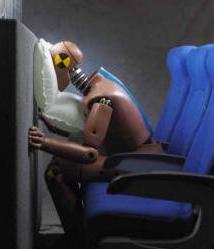|
|||||||||||
|
|
|
|||
|
By Daniel Baxter |
||||
 |
November 8, 2010 - AmSafe Industries one of the leading providers of engineered restraint systems, announced that the AmSafe Seatbelt Airbag is now available on approximately 35,000 seats on aircraft operated by over 60 airlines worldwide. "Since the FAA's 16G rule went into effect late last year and raised the bar for airlines in the area of occupant protection, demand for the AmSafe seatbelt airbag has increased markedly. Having invested tens of millions of dollars and a decade of innovation in bringing this product to market, it is heartening to see its growing adoption by the world's air carriers," said Terence Lyons, chief executive officer of AmSafe. "We continue to work actively with airlines, seat manufacturers and regulatory agencies to develop new enhancements to this life-saving technology and look forward to a day when each and every passenger on commercial airliners is afforded the protection our product offers." |
|||
|
|
||||
|
In service
since 2001, the AmSafe Seatbelt Airbag has enabled airlines to
comply with an FAA safety regulation that went into effect in
October 2009 requiring commercial aircraft seats to withstand a
crash impact of up to 16 times the force of gravity.
As
compliance with this regulation has proven difficult in certain
seating environments, airlines have increasingly turned to the
AmSafe Seatbelt Airbag as a reliable means of meeting the new
standard. In so doing, they have been able to deliver enhanced
passenger safety and at the same time avoid taking the
alternative approach to compliance: removal of rows of seats and
sustaining an associated loss of millions of dollars per
aircraft in revenue. The AmSafe Seatbelt Airbag has also enabled the introduction of new lie-flat, pod-style and similar premium seating environments which have become prevalent in first- and business-class cabins on long haul international aircraft. In many instances, the AmSafe Seatbelt Airbag not only makes the use of these innovative new seats possible, but also helps carriers maximize the number of premium seats on an aircraft while still meeting FAA safety standards. |
||||


